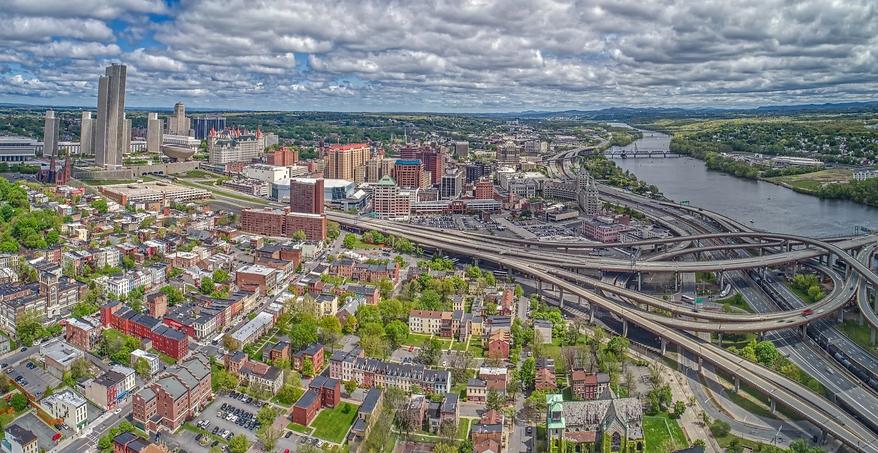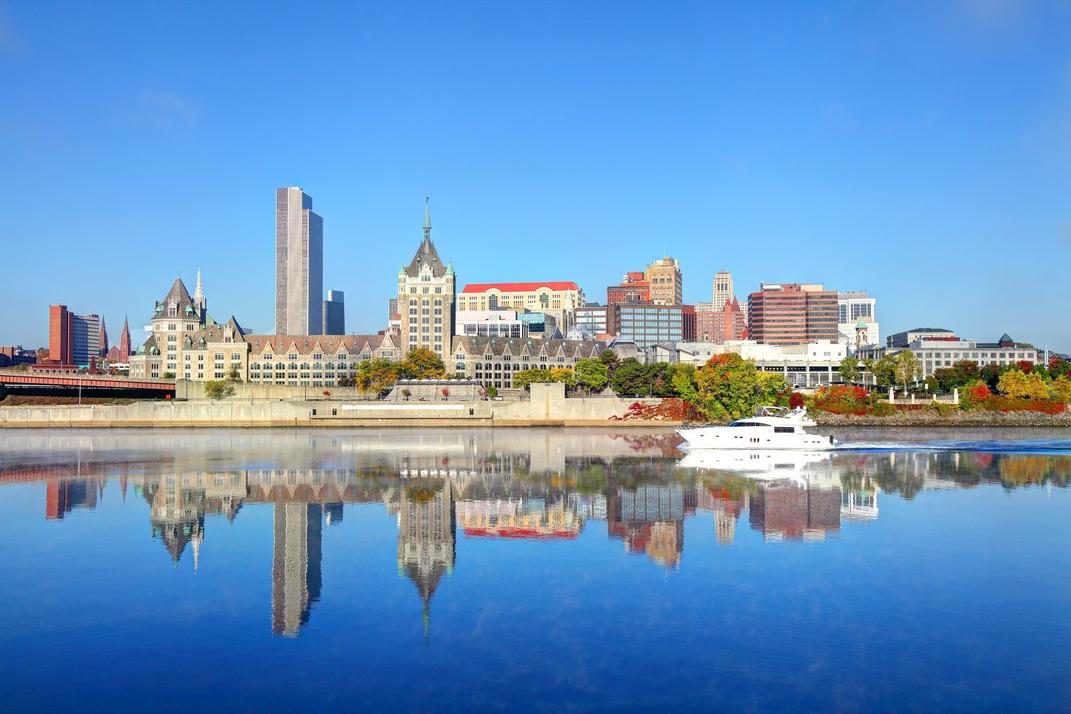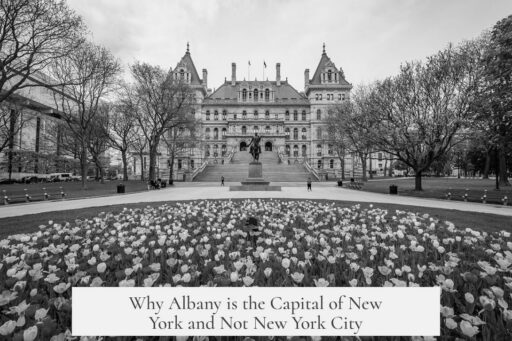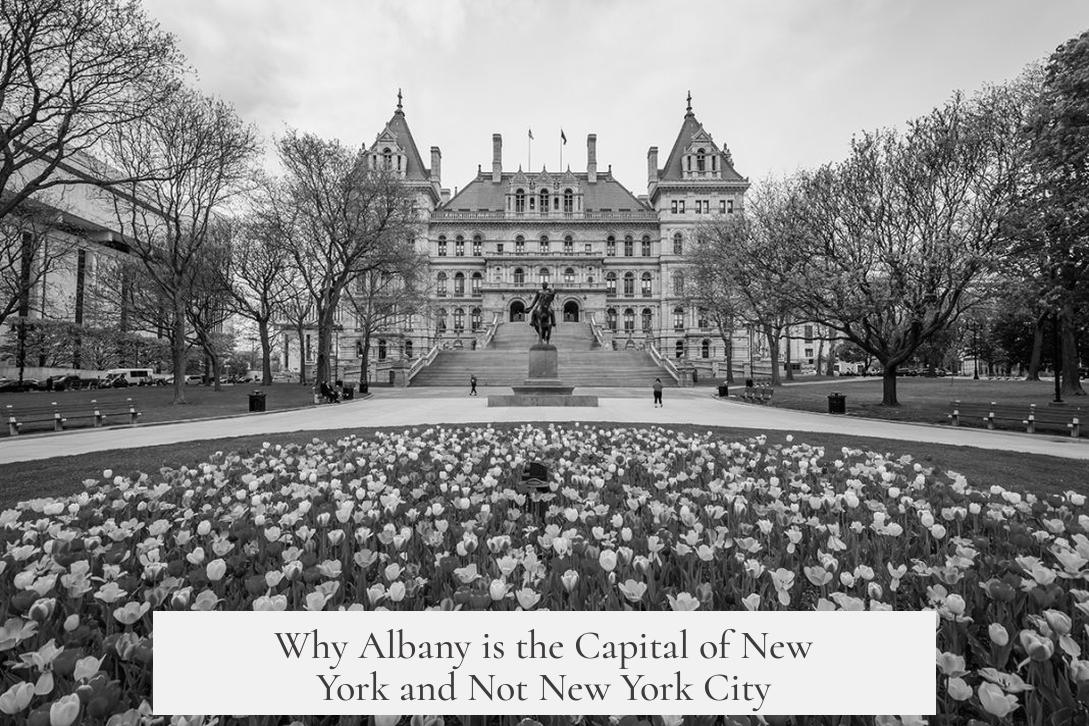New York City is not the capital of New York State because Albany was chosen for its more central location, political convenience, and ability to balance urban and rural interests, a decision rooted in historical, geographic, and political factors dating back to colonial times.

Originally, New York City and Albany developed distinct characters. New York became a bustling, cosmopolitan port city, while Albany retained a quieter, rural charm. This divide shaped politics, with a strong urban-rural tension influencing the choice of the state capital. Early colonial importance also played a role; while New Amsterdam (later New York City) thrived on its natural port and vibrant trade, notably the beaver pelt trade through the nearby Fort Orange (modern Albany), Albany held strategic significance at the Hudson and Mohawk Rivers junction.
When the British took over in the 1660s, they renamed New Amsterdam and Fort Orange to honor the Duke of York and Albany. New York City’s population quickly surged, doubling to 5,000 by 1698 and reaching 18,000 by 1760. Albany grew too but more slowly, reaching only about 3,000 people at that time. Despite New York’s prominence and size, its rapid urban expansion brought problems like overcrowding, pollution, and crime, making it less attractive as a political center.

Albany’s role expanded as revolutionary tensions grew. The city hosted key political meetings, such as the 1754 Albany Congress, where Benjamin Franklin proposed colonial unity. Albany’s strategic location and battlefield significance during conflicts like the Revolutionary War boosted its political standing. Even after New York City fell to British control, Albany remained in American hands, protected further by defenses like West Point. This reinforced Albany as a secure and stable location for governing.
The early New York State Legislature moved between several cities during the Revolutionary era, including Kingston and Poughkeepsie, before settling temporarily in New York City in 1784. New York City also served as the national capital under the Confederation Congress, hosting the fledgling United States government. However, the capital later moved to a site between Maryland and Virginia, diminishing New York City’s national political role.

Albany gradually gained services and government departments in the mid-1780s, increasing its influence. Governor George Clinton, a powerful figure, lobbied to move the state capital there to be closer to his estate and likely also to distance government from the strong New York City urban influence. Political debates were intense, and the bill to relocate the capital took multiple votes without initially naming Albany explicitly, reflecting ongoing political tensions.
The choice of Albany as the capital aligns with a pattern seen in many states, where capitals are centrally located, mid-sized cities, avoiding domination by the largest city. This ensures easier travel access for representatives statewide and mitigates urban dominance over rural areas. Albany fits all these criteria: it sits near the Hudson River, a major waterway facilitating transport and commerce, and occupies a more central position in the state compared to New York City at the southern tip.

| Factor | New York City | Albany |
|---|---|---|
| Location | Southern tip, less central | More central in state |
| Size | Largest city, urban | Medium-sized, balanced |
| Political Influence | Strong urban bias | Neutral between urban and rural |
| Transportation | Major seaport | Near Hudson river with important junctions |
| Historical Role | National capital briefly | Host to colonial conferences, state legislature |
Choosing Albany over New York City helped maintain a balance of power in New York State’s government. It avoided concentrating political control in the busy, populous city and instead placed it in a location both secure and convenient for statewide governance. This decision remained practical and politically wise, explaining why New York City isn’t the state capital despite its size and national importance.
- Albany was more geographically central, easing statewide access to government.
- It helped balance rural and urban interests in state politics.
- Albany’s historical significance and strategic location favored its selection.
- Political leaders influenced the capital’s move to Albany for convenience and power balance.
- New York City briefly served as national capital but lost state capital status due to politics and location concerns.
Why Isn’t NYC the Capital of New York?

Surprising as it may seem, New York City is not the capital of New York State. Instead, Albany holds that title. So, why didn’t the Big Apple, a city famous worldwide for its iconic skyline and influence, take the political crown? It turns out it’s a tale woven with history, geography, politics, and a dash of pragmatism. Let’s unpack this puzzle.
Early Days: Two Cities, Two Worlds

Back in the colonial era, New York City and Albany felt like they were part of different planets. New York, formerly New Amsterdam, quickly transformed into a bustling, cosmopolitan hub. Thanks to its natural port, it drew traders, immigrants, and the hustle-bustle of city life. Albany, located further north along the Hudson River, was quieter and retained a more rural, small-town charm. Both were crucial trading posts, but their characters diverged sharply.
New Amsterdam’s location gave it an edge. Its port was excellent, attracting business and opportunity. Meanwhile, Albany thrived through trade too—think beaver pelts. In the 1650s, Fort Orange near Albany was moving nearly 40,000 pelts per year! That’s a lot of beaver hats for colonial fashionistas. The importance of these locations for trade influenced their growth differently; New York exploded into a large city while Albany stayed more modest.

The British Influence and Population Dynamics
When the British grabbed New Netherland, they renamed New Amsterdam “New York” and Fort Orange “Albany,” in honor of James, Duke of York and Albany. The populations of both places grew, but New York’s growth was much faster. By 1760, New York City housed more than 18,000 people—big for its time—compared to Albany’s 3,000.
But big city life wasn’t all glamour. New York struggled with crowded streets, crime, and sanitation issues. Hogs in the streets and piles of refuse? Not quite the sparkling metropolis we imagine today. This city grime was a serious downside that would factor into conversations on government location.
Albany, the Revolution, and Political Centrality
During the revolutionary period, Albany made its mark. It hosted important political meetings, such as the 1754 Albany Congress, where Benjamin Franklin drafted his famous plan to unify the colonies—a precursor to the future United States government. While New York City faced intense British occupation and conflict, Albany remained under American control for much of the time, making it a safer political hub.
It was a strategic spot too. Albany’s proximity to West Point added military protection. This wasn’t just a matter of convenience; it made Albany a defensible seat of power. In contrast, New York City’s vulnerability to British occupation made it less stable as a government center during tumultuous times.
On the Early Legislature and Capital Choices
The first New York State Legislature roamed a bit, meeting first in Kingston, then Poughkeepsie, and only later touching Albany. New York City even hosted them starting in 1784. But this was a time of flux. The government bounced between locations depending on the British threat and shifting logistics.
New York City also served as the national capital under the Confederation Congress in the mid-1780s. Delegates moved there after a veteran rebellion in Philadelphia triggered a switch, and the city blossomed with government offices and frenetic construction. But even as a national capital, New York lacked one critical thing: political permanence.
The Capital Moves South—and Back North
The famous political deal between James Madison, Alexander Hamilton, and Thomas Jefferson saw the national capital move to a swamp near Virginia—yes, the future Washington, D.C.—in exchange for southern support of federal government financial policies. So, New York City lost the national capital to a place that was, frankly, less glamorous and much more marshy.
For the state capital, the story had yet another twist. Albany, slowly gaining influence, began to attract key government offices in the 1780s. Governor George Clinton, a powerful figure who lived near Albany, was a strong advocate for moving the capital there. The relocation effort wasn’t smooth, with multiple votes and hesitation. The move was even deliberately left vague in legislation, delaying Albany’s official recognition as capital until the 1980s. That’s political drama worthy of a Netflix series.
Why Albany Makes Sense as a Capital
Choosing a state capital isn’t about picking the biggest or flashiest city. It’s about logistics and balance.
- Central Location: Albany sits nicely close to the middle of New York State, making it easier for people from both upstate and downstate to reach the government.
- Size Matters: A capital city needs to support government functions without letting itself dominate state politics. New York City’s sheer size and economic muscle could overwhelm rural and smaller town interests. Albany’s moderate size keeps politics fairer.
- Waterway Access: Being on the Hudson River, Albany has navigable water routes, vital for transport and trade in early America. This made it easy to get goods and people in and out of the city.
So while New York City dazzles with skyscrapers and a global presence, Albany quietly holds the crown for good practical reasons. The balance between urban and rural, historical safety, and geographical fairness all tipped the scale in favor of Albany.
What’s the Takeaway?
Choosing the state capital was never just about being the biggest or richest city. It was a mix of history, location, politics, and practical needs. New York City might be the face of the state and an economic powerhouse, but Albany carried the political torch because it was strategically positioned to represent all parts of New York fairly and safely.
Next time you think about the “capital of New York,” remember: it’s not always the flashiest spot that wins the crown—it’s the city that balances access, influence, and history. Sometimes, the quieter city behind the scenes rules the day.
Fun Fact to Ponder
Did you know? Albany wasn’t officially recognized as the state capital until the 1980s! Imagine that: for over two centuries, the state government ran from there without it being “official” in writing. Politics can be stranger than fiction.
Why was Albany chosen over New York City as the capital of New York?
Albany was more centrally located, making travel easier for representatives. It was also medium-sized, reducing urban bias in government. Its position on a major waterway helped, too. These factors made Albany a practical choice over New York City.
Did Albany play a significant role before becoming the capital?
Yes. Albany hosted important political meetings, including the 1754 Albany Congress. This set the stage for colonial unity and gave Albany political clout. Its strategic defenses also made it an attractive government site.
Why didn’t New York City remain the state capital despite its size?
New York City grew quickly, but problems like overcrowding and poor sanitation made it less ideal. Also, leaders wanted to avoid urban dominance in state politics. Convenience for influential figures favored moving the capital to Albany.
Was New York City ever the national capital?
Yes, after the Revolutionary War, New York City briefly served as the capital of the new nation. However, a political deal moved the capital to a more southern location, which eventually became Washington, D.C.
How long did New York’s government meet in various cities before settling in Albany?
The state legislature met in Kingston, Poughkeepsie, New York City, and Albany at different times between 1776 and the mid-1780s. Albany became the permanent seat after several years and political negotiations.




